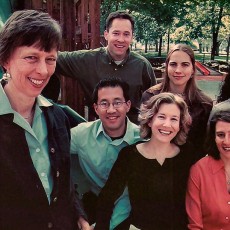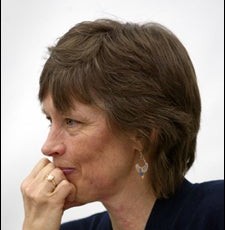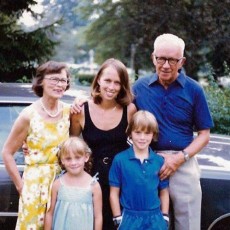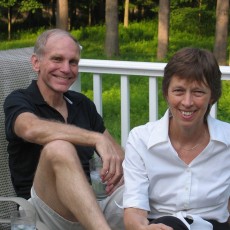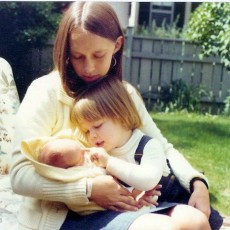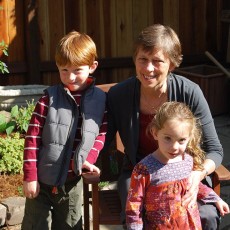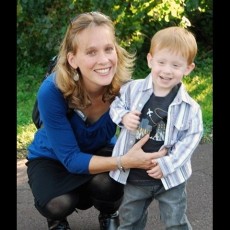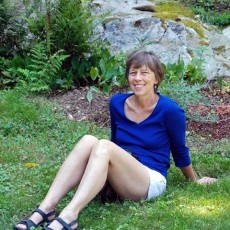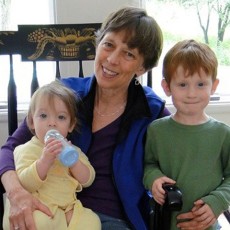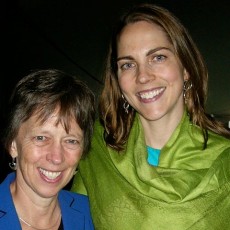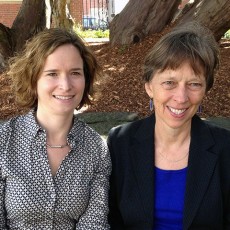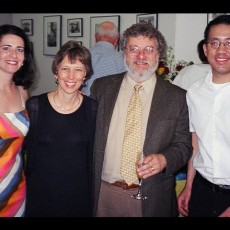Susan Moore Johnson

Susan Moore Johnson is the Jerome T. Murphy Professor of Education in the Harvard Graduate School of Education. Dr. Moore Johnson is also co-chair of the Public Education Leadership Project, a collaborative initiative with the Harvard School of Business to provide intensive summer training to school administrators. Having taught high school English for several years before pursuing her doctoral degree, Moore Johnson worked collaboratively with her graduate students to establish the Project on the Next Generation of Teachers and continues to chronicle the experiences of new teachers in a changing profession. She dedicated much of her early career to the study of teachers unions, collaborative bargaining, and teachers’ working conditions. A modern pioneer in these areas, Moore Johnson has drawn attention to the contexts in which teachers perform their work, specifically highlighting the importance of schools’ collaborative culture in teacher retention. Recognized for her distinguished contributions to educational research and scholarship as well as her profound impact in teaching, Moore Johnson has been elected to the National Academy of Education and received the Morningstar Family Teaching Award from the Harvard Graduate School of Education. Moore Johnson, honored by the American Association of Colleges of Teacher Educators with the Outstanding Book Award for Finders and Keepers: Helping New Teachers Survive and Thrive in Our Schools (2004), has also written six books and numerous book chapters and articles in scholarly publications. Her most recent publications include: Redesigning Teacher Pay: A System for the Next Generation of Teachers (2009) and Managing School Districts for Higher Performance: Cases in Public Leadership (2007).
For more information, visit Susan Moore Johnson’s Website. To learn more about Susan Moore Johnson from her family and friends, visit her Reflections. To view photographs from Susan Moore Johnson’s personal collection, visit her Photo Gallery.
Curriculum Vitae Suggested readingsVisit the video below to watch a short overview of the interview with Susan Moore Johnson. Otherwise, see all four of the full interviews with Susan Moore Johnson below.
Video Interviews with Susan Moore Johnson:
Recalling her childhood in a small suburb of Youngstown, Ohio before the surrounding steel mills closed, Dr. Susan Moore Johnson enjoyed participating in Girl Scouts and summer camp at the YMCA. Inspired by her father, a high school English teacher, and other family members to consider a career in education, Moore Johnson envisioned herself as a teacher from a young age, even spending afternoons in his classroom helping to grade tests. Moore Johnson, having worked as both a teacher and administrator while pursuing her master’s degree in education at Harvard University, later returned to earn her doctorate there, where she discovered an interest in labor relations, and specifically the role of teachers’ unions and the importance of collective bargaining. She continued to hone her skills as a researcher, later accepting a position as a faculty member at her alma mater. Watch this clip to hear more from Dr. Moore Johnson about the importance of the writing process and defining herself as a qualitative researcher.
In response to resurging demands for teacher merit pay, Dr. Susan Moore Johnson describes the history of teacher compensation and, citing while questioning contemporary claims that more money will motivate teachers to work harder, explains the benefits of career-ladder programs that allow teachers to assume more responsibility for more pay. Also interested in the changing dynamic within teachers’ unions as a new generation of educators enters the profession, Moore Johnson recognizes the need for young teachers to both understand and facilitate the work of unions. In this clip, learn more about the importance of teachers’ working conditions in the overall success of a school, especially in schools serving high-needs students.
Dr. Susan Moore Johnson has been interested in the relationship between teachers in the classroom and their schools and districts throughout her career. Having forged a unique collaborative relationship between the Schools of Education and Business at Harvard University, Moore Johnson describes her work with colleagues to provide intensive summer training for school administrators. In addition, she shares her excitement about an initiative undertaken with her doctoral students to chronicle the experiences of new teachers, including the experiences of her daughter as she too entered teaching. Recalling her own experience entering the profession nearly 30 years earlier, Moore Johnson expresses her keen interest in the next generation of educators. In this clip, learn more from Dr. Moore Johnson about one of her most valuable resources as a researcher and scholar-her own insights as a classroom teacher.
Already a distinguished educational researcher and scholar, Dr. Susan Moore Johnson insists that she “tends not to plan ahead” but would like to synthesize what is known about teacher quality as part of her future research. She describes her continued interest in work that leads to differentiated career paths for teachers, especially as academic leaders in their schools, adding that the days when teachers spend 30 years in the classroom are gone. Always having been interested in the study of law as well, Moore Johnson explains that a career in education has made her much happier than she would have been in the courtroom-she prefers engaging with people over confrontation. Watch this clip to hear Dr. Moore Johnson’s advice to graduate students as she counsels those seeking to enter academia to “focus on what makes you happy day to day.”
Amrein-Beardsley, A. (2012, September 3). Inside the Academy video interviews with Dr. Susan Moore Johnson [Video files]. Retrieved from /inside-the-academy/susan-moore-johnson
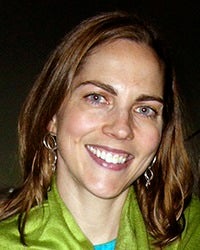
Dr. Morgaen Donaldson
Although formally serving as Dr. Morgaen Donaldson’s doctoral advisor, Dr. Susan Moore Johnson also played a central role “as a mentor, collaborator in research, writing, and teaching, and [as a] friend.” When first assigned an advisor upon entering graduate school, Morgaen explains that she “had no idea what this would mean for her or how fortunate she was.” Although she had not planned to pursue a career in academia, Morgaen credits her mentor for having changed her professional goals entirely, noting that Susan showed her “how rigorous, informed, and respectful scholarship can make a difference for the nation’s teachers and children.” Adding that Susan “is one of the first people she turns to for professional advice,” Morgaen “trusts her judgment without question [as Susan] not only considers her professional aims but also knows and values her commitment to her family.” Having traveled around the U.S. with Susan conducting various research projects, Morgaen describes the friendship they developed during the hours spent “waiting for delayed flights, watching baseball games, and eating in all manner of restaurants.” Recalling a humorous incident while collecting data in Florida for their interstate study of teachers union presidents, Morgaen remembers an early morning drive to Tampa for an interview. Planning to drive along the coast for just a few miles before heading west across the state, Morgaen and Susan realized after a half hour of deep conversation that they had completely missed their turn and traveled north up the Atlantic coast-they were two hours late for the interview and got caught in a torrential downpour on the way back! Citing several of Susan’s most significant professional accomplishments, Morgaen notes that “with simple prose and flawless logic, [her] work captures the essence of what it means to be an educator in U.S. schools.” Morgaen adds that “through her stellar research and steady work to improve schools, Susan has earned respect from her colleagues, including those with different methodological orientations, political leanings, and degrees of connection to the world of practice.” Noting as well that Susan’s many awards and honors “speak to her ability to read audiences and frame her message so that people, regardless of their situation, understand and act on her message,” Morgaen explains that “in her teaching, research, writing, and mentoring, she commits herself fully to the task.” When thinking of her long-time mentor and friend, Morgaen explains that the end of E.B. White’s Charlotte’s Web comes to mind: “She was in a class by herself. It is not often that someone comes along who is a true friend and a good writer. Charlotte was both.” Morgaen explains that “Susan is indeed in a class by herself. She is, without fail, a true friend and a good writer, thinker, and scholar.”
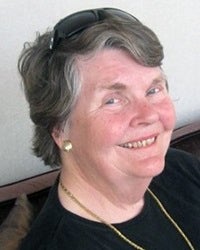
Dr. Patricia Albjerg Graham
Having met Dr. Susan Moore Johnson nearly 35 years ago “as she sat hunched over an IBM Selectric typewriter completing her doctoral thesis in an adjacent office,” Dr. Pat Graham recalls her immediate bond with her neighbor as they reminisced about their shared history as high school teachers. Noting that Susan “impressed her enormously with her discipline as she stolidly sat at her machine pecking away at her thesis on teachers,” Pat recalls her friend and colleague then as a “young mother making a familiar transition of redefining herself from teacher to engaged scholar about teaching.” Having been selected as a National Academy of Education/Spencer Foundation post-doctoral fellow and appointed as a junior faculty member at the Harvard Graduate School of Education, Pat describes Susan’s surprise when she told her that she “would make an excellent professor at Harvard.” Noting that “at that time, it was quite rare for a person to come up through the ranks to a professorship at Harvard,” Pat explains that this made sense as “Susan is indeed a rare person and a contributor in many dimensions to the improvement of education.” Describing her long-time friend and colleague as “a supremely integrated individual with remarkable accomplishments in several domains,” Pat notes that “Susan exemplifies at very high levels what we wish to achieve with our students: wit and character.” Adding that “Susan is, of course, an accomplished scholar…[who] takes her scholarship seriously,” Pat explains that “she wears it lightly just as she does the extraordinary mentoring of her generation of students both in her formal teaching and in her extended informal meetings with them as they pursue their degrees and afterwards.” As an accomplished administrator, Susan also holds dear “the principles of integrity, concern for others, [and] commitment to the improvement of society that suffuse her work.” Explaining that Susan and her husband “have maintained an admirable life together rearing two children and now several grandchildren with attention to and enthusiasm for the entire family enterprise,” Pat notes that “Susan’s great talent is for integrating the various aspects of her life in each of which she maintains very high standards for herself.”
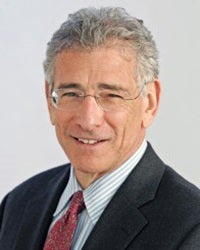
Professor Allen Grossman
Allen Grossman has worked collaboratively with his friend and colleague, Dr. Susan Moore Johnson, as co-chair of the Public Education Leadership Project (PELP), a joint venture between the Harvard Business School and the Harvard Graduate School of Education. Noting that this project is “the only one of its kind from a content perspective and the longest sustained education/business school project in America,” Allen explains that PELP focuses on “developing and disseminating a body of management and organizational knowledge for leaders at all levels of public school districts.” He further describes the use of the case teaching approach in the Business School, less-familiar in the Graduate School of Education, adding that Susan “jumped right in when she took over as co-chair.” Noting that she “rapidly evolved into a fine case method teacher by dint of hard work and thoughtful experimentation,” Allen explains that he has “observed other mature teachers shy away from mastering a new classroom approach, but not Susan.” Also working with Susan and other colleagues as co-authors, Allen adds that the group meets regularly “to share their perspective on a particular aspect of their research.” As their “ideas are often arrayed along a broad spectrum,” Allen explains that each often “ardently argues the merits of his or her thinking,” adding that “Susan is no exception.” Citing her unique ability to “stay on her position longer than most [without] giving a hint that she is wavering,” Allen explains that she “will declare she has embraced another idea, rarely providing any signal the change was coming or why it occurred,” insisting that he “would not want to play poker against Susan!” Characterizing his friend and colleague as “serious about her work, totally reliable in delivering what she commits to doing, [and] deeply caring for her peers and students,” Allen explains that Susan is “firm in her beliefs but flexible enough to change after consideration of alternative ideas and approaches,” adding that she “works hard and will not accept anything less than excellence.”
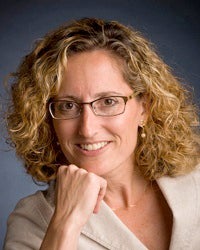
Dr. Monica Higgins
Dr. Susan Moore Johnson and Dr. Monica Higgins work collaboratively on the Public Education Leadership Project (PELP), a joint initiative between the Harvard Business School and the Harvard Graduate School of Education, in addition to having offices in the same hallway only a few doors apart. Citing Susan as one of the reasons she transferred to the Harvard Graduate School of Education, Monica explains that she is “incredibly inspired by her leadership of the program” as she has created a close-knit team of faculty colleagues and practitioners who are “committed to making a difference in the world of education.” Susan is “a compassionate, warm, and dedicated person who truly walks the talk. This is, she not only cares deeply about helping solve the complex problems that vex public education in order to better serve all students, she herself puts her own students front and center in her work.” Monica notes in addition that Susan “has incredibly high standards for quality, which also makes for an effective mentor.” When she announced that Susan would come to ‘coach’ some students on case teaching in her class, “they were both anxious and excited…They were anxious because they knew that she would give pointed and sharp comments, but at the same time, they were excited because they also knew that she respected them so much that whatever she said, they would leave motivated and inspired to be even better.” In addition, Monica highlights the personal and professional impact that Susan has had on colleagues and students alike, noting that some of her students “affectionately call her ‘SmoJo’ (although never to her face).” She adds that “SmoJo is more than just a simple nickname. It embodies Susan’s presence at HGSE [Harvard Graduate School of Education]-demanding and respected, yet nurturing and joyful. This rare combination of characteristics naturally leads to quite the following among students…[In fact], one of her doctoral students even went so far to get a plaque with the HGSE logo engraved with WWSMJD-What Would Susan Moore Johnson Do?-to sit above her desk as a reminder [about] how to make good decisions in life.” Noting that Susan is also a great dancer and avid runner, Monica adds that few are aware that she was also a cheerleader in high school (as it was the only athletic opportunity available, before the time of Title IX). As “someone who cares a great deal about two things at the same time-rigor (the quality of work) and compassion (paying attention to the well-being of whomever is doing the work),” Susan is “approachable and always has time to lend an ear [while] at the same time, she ha[s] definitive opinions about things and is not afraid to speak up.” Monica captures the essence and nature of Susan, explaining that “she is an excellent role model for so many of us!”
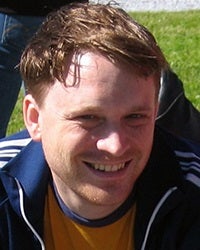
Krister Johnson
While many people in the world know his mother, Dr. Susan Moore Johnson, as an “esteemed academic, a tenured Harvard professor, [and] an author,” Krister Johnson explains that he thinks of none of those things-he just thinks “Mama.” Although he is a married adult with a son and career, Krister explains that he always called her Mama as a child, still does, and always will. Krister notes that he is “often startled when he hears news from her professional world because her presence in his life as a caring, thoughtful, nurturing Mama is so complete that he has trouble understanding how there is even any time or energy to do all the work for which she is now being honored,” adding that he does “not know how she did it, but she never compromised on either.” Recalling an event from his childhood that exemplifies her “extreme empathy for her children,” Krister describes the stress she experienced when he underwent a relatively small medical procedure. Although she cheerfully greeted him as he awoke from the general anesthesia, Krister recalls her response to the decreasing stress, explaining that he “watched in disbelief as her eyes rolled back in her head, she tumbled from her chair, and passed out COLD on the hospital floor. Both spent the next hour recovering in beds side-by-side.” Krister also describes her determination to make sure that both of her children always received equal and fair treatment-this principle applied to gift-giving as well. Noting that he and his sister, Erika, both received lottery scratch tickets in their stockings from their parents each year for Christmas, Krister remembers his mother’s distress when one child won and the other did not. He is certain that his mother “secretly hoped they would BOTH win exactly the same amount or that they would both lose, thus losing EQUALLY and FAIRLY.” Explaining that he is not sure if his mother’s most significant accomplishment “lies with one single act or event,” Krister notes that in addition to having a successful career, she has been a “wonderful and devoted mother-and now grandmother….” In addition, he notes that his parents have been married for over 45 years [and that] any of these are accomplishments to be proud of. To have somehow managed them all at once is remarkable.” Krister notes in addition that his mother “ran 5-6 days a week for over 25 years before anyone in the house had even woken up!” Capturing his mother essence and nature, Krister summarizes his sentiment: “She is my Mama. I am her boy. I can still be held by her and feel safe…I just feel so grateful to have her in my life.”

Dr. Susan Kardos
Dr. Susan Kardos, describes meeting her long-time friend, colleague, and former advisor, Dr. Susan Moore Johnson, on the first day of her education doctoral program at Harvard, writing that “suddenly she found herself in an orientation…, surrounded by bright, accomplished, and focused classmates. Terrified, she wondered what she was doing there. And then there was Susan. In her calm, inviting way, Susan welcomed her and began to ask her questions about her interests, her life, and her aspirations.” Dr. Kardos adds that her friend “cares about people, their substance, their histories, and their dreams. After that day, she explains that her friend, Susan, “became her teacher, her doctoral advisor, her mentor, her role model, her coauthor, [and] her Rabbi (in a metaphorical kind of way), [in addition to being] her friend.” She adds that “Susan remains today-many years later-a central figure in [her] life.” Dr. Kardos notes that she wrote an ancient Rabbinic teaching on the very first page of her dissertation: “Make for yourself a teacher, acquire for yourself a friend….” Describing “Susan Moore Johnson [as] both a real teacher and a true friend,” Dr. Kardos explains that “she is one of the few people in the world who will, eternally and unconditionally, have her deep love, admiration and gratitude.” Also explaining that “the research agenda that Susan has been pursuing her entire career-to exacting standards-is very much grounded in her experience as a high school teacher,” Dr. Kardos describes her friend’s “desire to improve the conditions and contexts in which [teachers] do their work,” adding that “her work is relevant to them and useable by them, and her deep respect for the work of teaching and the people who do it is evident throughout the large body of work she’s produced.” Susan’s “influence on her students has also been immense.” Recalling her experiences working on a research project together with a new cohort of graduate students, Dr. Kardos explains that Susan Moore Johnson “developed structures, a culture, and atmosphere that created not only an intensely powerful professional experience but also a joyous and fulfilling personal one.” Describing two conflicting images when thinking of her friend, Susan explains that the first is “Susan the Giant whose professional accomplishments and intellect are gigantic, [adding that her] abilities to build relationships, to design processes and build communities, and to set goals and achieve them are immense. Her mentorship generosity, kindness, and inclination towards wholeness are all immense. The other image is of Susan the Fairy Princess who is graceful yet powerful. She is wise and magical. Her spirit is luminescent.” Dr. Kardos adds she is “pretty sure that [Susan] can fly.”
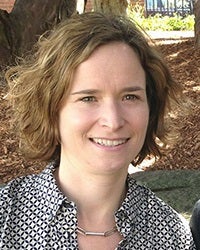
Dr. Nonie Lesaux
Having worked collaboratively to develop and teach a course for doctoral students entering the Harvard Graduate School of Education, Dr. Nonie Lesaux and Dr. Susan Moore Johnson have been friends and colleagues since their joint teaching began. Noting that Susan’s “personal and professional accomplishments are countless-as a scholar, a teacher, a mother, a wife, a grandmother, and as a good friend to so many,” Nonie explains that her friend has “cultivated a career, a family, and friendships that are all testaments to the amazing person she is.” Nonie adds that she is “continually struck not just by the depth and complexity of her work but also by the ways in which she brilliantly packages and conveys complex scholarship so as to provide our field with a richer understanding of issues related to attracting, supporting, and retaining quality teachers in U.S. public schools.” Susan “manages to illustrate important educational issues in ways that both honor their complexity while also conveying clear, practical implications that resonate with people-whether researchers or policymakers.” Furthermore, Nonie notes that “many are struck by the fact that they haven’t seen a particular issue with such clarity before.” Characterizing Susan as “the perfect blend of scholar, mentor, and teacher,” Nonie explains that “each of these roles informs the other.” To Nonie and many other colleagues and students, Susan is “both gracious and generous with her time and her wisdom.”
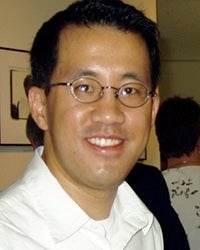
Dr. Edward Liu
Describing his former teacher and dissertation advisor, Dr. Susan Moore Johnson, as a mentor and role model, Dr. Edward Liu recalls his experiences as a member of the first group of doctoral students who worked with Susan on the Project for the Next Generation of Teachers in the Harvard Graduate School of Education. Ed explains that “even though they were novice researchers, Susan had a way of treating them as colleagues and peers, while guiding and mentoring them all the way.” Adding that Susan “created a remarkable team culture within the project,” Ed describes the “tremendous spirit of intellectual generosity and a commitment to one another’s growth and well being” that fostered “long lasting personal and professional relationships [among team members], while [they did] challenging and rigorous work.” Noting that he believes “there were other graduate students who were jealous of the opportunity some of them had to work with Susan,” Ed and his classmates equated their good fortune to “getting to ride in ‘the cool car’ with Susan, as in the car with the cool high school kids!” Recalling fond memories of time spent with his mentor, Ed describes attending a baseball game at Wrigley Field “while playing hooky” from the annual meeting of the American Educational Research Association (AERA). Ed and Susan continued this tradition during their free time whenever they attended meetings in towns with major league baseball teams. Citing among her most significant professional accomplishments Susan’s ability to “find the synergies between teaching and research,” Ed explains that “she taught courses and conducted research that spoke powerfully to both other scholars as well as practitioners,” adding that “she is an amazing teacher both inside and outside of the classroom.” Edward characterizes his mentor as “brilliant, wise, amazingly generous, loyal to those who have helped her along the way, as well as able to engender intense loyalty among those she has mentored.” He explains further that, “she is also someone who has never forgotten what it is like to be a K-12 teacher, and her deep respect for the teaching profession, and for the difficulty of teaching, is clear in her work.” Ed captures the essence and nature of his mentor with a phrase that captures the sentiment of many who “have been lucky enough to work closely” with Susan: “She’s the best.”
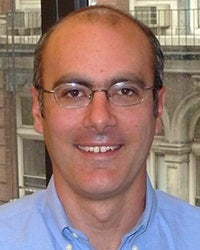
Dr. William Marinell
Describing his doctoral advisor, dissertation chair, mentor, and co-author, Dr. Susan Moore Johnson, as first and foremost a good friend, Dr. Will Marinell adds that she is “quick to laugh, has a very sharp wit, natural comedic timing, and can both give and take a joke.” Noting her terrific sense of humor, Will explains that he “always knows when Susan has upgraded her technology, as he receives half-written e-mails, e-mails with only signatures, and duplicate e-mails.” He adds that he always chuckles at Susan’s ensuring apology and explanation: “Sorry, I just got a new X (smartphone, laptop, iPad, etc.)!” According to Will, Susan also “has a theory regarding men’s psychological motivation for growing beards.” Adding that he had a beard at the time of the discussion, Will explains the “gist of her theory was based on some underlying notion that men with beards seek to hide some critical aspect of their personality…or some such ridiculous nonsense!” On a serious note, Will cites among Susan’s most profound and, perhaps, less visible contributions “the scores of students whom she has helped develop logical, informed theories, rigorous ways of investigating these hypotheses, and a narrative thread to tell their story.” Adding that she “has pushed so many individuals to think and write more deeply and clearly [that] the cumulative effect of her work as a teacher, if we could measure it, would be staggering,” Will characterizes Susan as “a master of a trade-teaching-that may require more creativity, stamina, versatility, intelligence, and compassion than any other profession.”
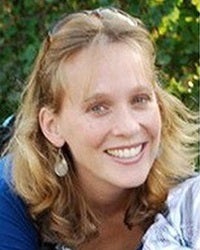
Erika Moore Johnson
Dr. Susan Moore Johnson and her daughter, Erika Moore Johnson, “are very close and always have been.” Explaining that they share so many things in common, Erika notes that they both “tend to wear shades of blue and purple, love to run, hate to weed, look good in hats (but rarely wear them), cry at airports watching other people reunite, live for bargains, and if given the choice, would rather not cook.” Adding that they “shop best when shopping together, eat yogurt and shredded wheat every morning, and are passionate about homemade birthday cake,” Erika also notes that she and her mother are both “highly protective of their families, intolerant of arrogance, and committed to the field of education.” Sharing stories of her mother’s dedication and persistence, Erika explains that her parents created Halloween costumes each year for her and her brother, Krister. Requesting to dress up as Miss Piggy one year, Erika recalls that her mother quickly located the pink top, feather boa, and plastic tiara. Finding a suitable rubber nose proved much more challenging. Having “traipsed all over the city of Boston” to find the much-needed accessory, her mother persevered, locating the perfect pig nose that pulled the outfit together. She was determined that Erika would look fabulous! Also noting her mother’s dedication to her grandchildren, Erika explains that she “did not want to be called Grandma because that sounded old.” Advised by a friend that her grandchildren wouldn’t be able to pronounce the word at first anyway, her mother prefers to be called Whammy instead! Describing her professional accomplishments as well, Erika describes “the incredible range of [her mother’s] professional expertise,” explaining that “she moves fluidly from the topic of teacher quality, to unions, to national policy, to teaching and learning in the classroom, to administration, and to community contexts.” As a doctoral student herself, Erika adds that she “can safely say that [her mother] can speak about education with the breadth and depth that few others can.” Erika has also witnessed her mother’s impact on her students. She recalls the holiday parties she threw for her students each year and remembers “noticing a pattern to these evenings. Students would first come in, eat, and talk to each other. Yet, within an hour she would find herself pulled into corners by earnest, teary-eyed students who would talk about how [her mother] had changed them.” She adds that “one after another, these students spoke of how she took care of them and pushed them to become more rigorous thinkers, more accomplished writers, and more thoughtful academics. She was the best teacher they’d ever had and [wanted] to know if I knew how lucky I was to have her as a mom.” Erika says that she “would nod with great seriousness [that] yes [she] did.” Characterizing her mother’s tirelessness and fearlessness in working towards her goals, Erika notes that her high school debate coach called her “tiger,” adding that that the nickname is still apt. To Erika, her mother “is a quite special kind of tiger.” Erika explains that her mother “is the most honest and moral person” she knows, “believing in excellence, doing good in the world, and treating others well.”

